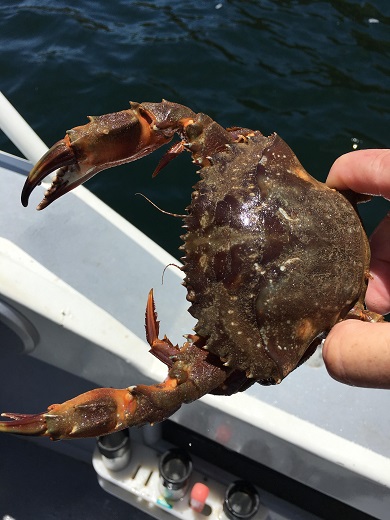If you are crabbing over summer, the Department of Primary Industries and Regional Development is calling on you to report any unusual crabs you find.This follows scientific confirmation this week that a crab, caught recently in the Swan River at Blackwall Reach in Bicton, is an Asian paddle crab (Charybdis japonica).
Aquatic Biosecurity Officer Marion Massam said there were real fears this pest could out-compete our native species such as the iconic blue swimmer crab.
“So far, the Asian paddle crab has not established pest populations anywhere in Australia and, by staying alert, we can help prevent it becoming a marine pest here in WA,” Ms Massam said.
“An invasion of this pest crab has already occurred in New Zealand, where it is eating shellfish and small crustaceans and we need to take extra care to avoid a similar impact here.”
An alert fisher caught the pest crab last week, retained it and immediately reported their find through FishWatch. Ms Massam said continued vigilance by crab fishers was vital, in the ongoing efforts required to prevent the pest species from establishing itself further in WA.

This Asian Paddle Crab was found in the Swan River on 5 December
“Fishers have been very important – as the four paddle crabs previously detected in the Swan River in 2012 and 2014, and one in Mandurah in 2010 were all caught by recreational fishers,.
“The newly discovered Asian paddle crab is brown with orange highlights and purple legs, but we know the species varies greatly in colour – its definitive features are the six sharp spines between the eyes and the six spines down each side of the shell, as identified in the department’s pest alert, which is available at www.fish.wa.gov.au/biosecurity.
“The biosecurity alert also shows pictures of native crabs (particularly the small four-lobed swimming crab) that have sometimes been confused with the Asian paddle crab. The small native crab has no spines between the eyes – so fishers should take a close look and, if there are no spines, then it’s usually the native crab.”
“A big thanks to everyone who calls FishWatch with reports of this pest. While all but a few of those calls have been native species, please keep the reports coming on 1800 815 507.”
In general, fishers should first look at any small crabs with a shell width up to 120 mm that look different to blue swimmers and then check for the spines between the eyes. If you think you’ve found an Asian paddle crab, please examine it closely (by comparing it against the pest alert that’s available online at www.fish.wa.gov.au) and make a note of where you saw or caught it.
Fishers are also urged to take photos of the suspect crab, especially from above, keep the specimen and phone the FishWatch 24 hour hotline on 1800 815 507 as soon as possible.